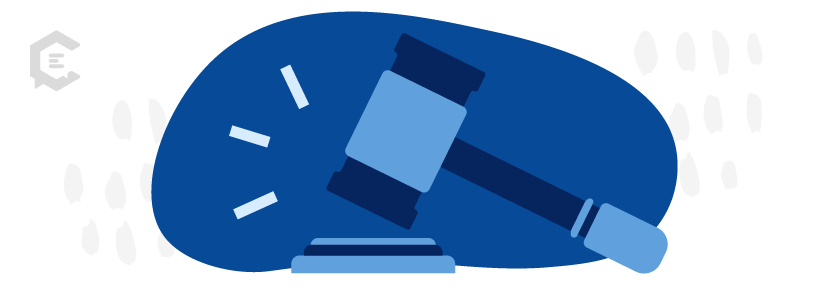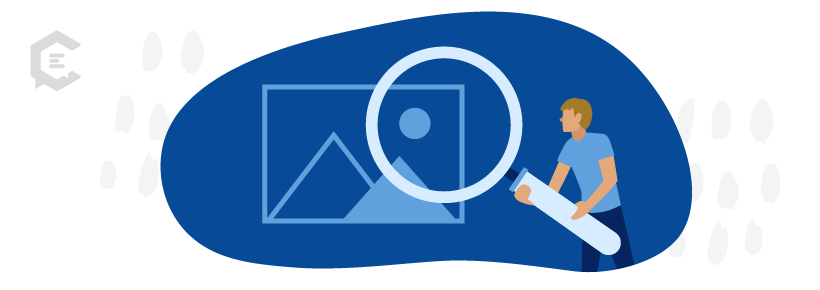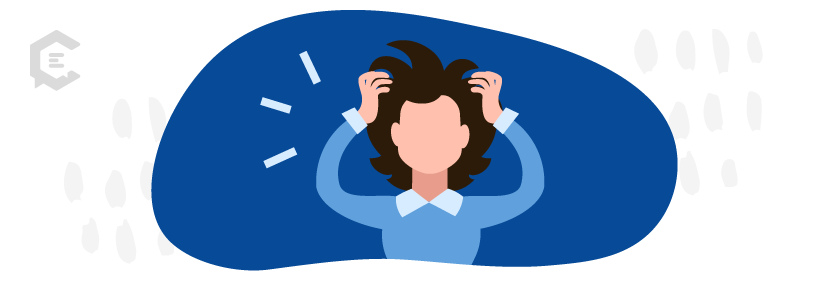Once upon a time (i.e., in the days before computers and online searches), finding and using images for articles or marketing brochures required some effort. Locating the image would take time. Once located, you would have to reach out to the creator (either by phone or snail mail) for permission to use it and a copy of the image.
Those sluggish times are gone. These days, finding an image involves inputting information into a search engine, locating an image, and right-clicking on your mouse to download it.
Easy, right?
Not so fast. This method could put you in violation of copyright laws. Those caught with copyright infringement could end up paying fines, in prison or both. This is the case even if you inadvertently repost, publish, resize, or share an image with others.
Understanding image copyrights
The best way to avoid infringement is to familiarize yourself with the law pertaining to copyrights. If you’re really ambitious and have plenty of time, you can check out Title 17, Copyright Law of the United States.
Like most people, however, you might not have time to plow through the 456-page document. What follows are some of the high points of image copyrights, copyright laws, and infringement.

Copyright — what does it mean?
The literal meaning of copyright is “the right to copy.” But the legal definition focuses on rights that are granted by law to creators. Those rights allow the creators to protect their creations from unsanctioned stealing and unauthorized use.
When it comes to images, copyright law protects the following works of art:
- Photographs
- Drawings
- Sketches
- Diagrams
- Maps
Copyright protection is granted to the creator the moment an image or piece of artwork comes into being.
In some cases, this can be easy to decipher:
- The © is a copyright symbol,
- A statement, such as “this work is copyrighted by Soo McGoo”
- A watermark on the image
But many times, determining copyright protection isn’t all that obvious. If you really like an image and want to use it, but there’s no obvious copyright attached to it, the next step is to conduct an online search at copyright.gov.
How to find out if an image is copyrighted
Copyright.gov allows you to examine image copyright public records to determine if the image you’re targeting has been registered with the U.S. Copyright Office. If you’re looking for a particular image, your best bet is to input keywords and as much information as you can. Inputting “black dog” AND “image” will bring up a variety of registrations connected to this information.
Having said all of this, plowing through this information can be time-consuming. And, even if you can’t find the image via the search engine, you shouldn’t assume that it’s yours to use. Not finding that image only tells you that the original creator might not have registered the art with the Copyright Office.
Your next best bet is to use Google to search online. If you find it on a public domain site (see below), you’re good to go. If not, you might want to find another image.
What about fair use?
By now, you might have poked around copyright.gov, and stumbled across the concept of “fair use.” Fair use involves copying or reproduction of copyrighted material for limited and “transformative” purposes. Such purposes include commentary, criticism, reporting, research, or teaching. Technically, if an image qualifies under fair use, reproducing it under certain circumstances shouldn’t mean infringement.
If you’re writing a book review and want to use an image of that book to highlight your content, it probably will qualify under fair use. The operative word here is “probably.”
Fair use comes with very general guidelines and many varied court decisions. It could also come with a fair amount of legal fees. If a fair use case gets to court, it can be open to interpretation.
So, yes. You could conceivably use images under the concept of fair use. Or, it could backfire.

How to find images legally
The above focused on the legal issues of image copyrights and infringement. The next question is, where can you find images for use without hearing from a creator’s lawyer? If you don’t have the time or ability to create your own, you have two options: royalty-free or public domain.
Royalty-free images: use, not ownership
Unlike what the name suggests, royalty-free doesn’t mean you get to use an image for free. Rather, it means you pay a certain amount for the right to USE that image. While you can use that image, you don’t own it.
Plenty of royalty-free sites exist. For example, Shutterstock, Getty Images, and Adobe Stock offer millions of images you can use — for a price and in certain situations. This brings us to the second point. Namely, be sure that you are using the images based on licensing parameters. For instance, you might not be able to use some images for monetary gain — at least not without specific permission.
Public domain images: free use, few restrictions
Another option is to search for images on public domain sites. Public domain represents a space in which no intellectual property rights exist.
Works within the public domain can be used without restriction under the following circumstances:
- Expired image copyrights: The issue here is that copyright expiration dates vary.
- Placement into public domain before copyright expiration (such as Creative Commons).
- Work that isn’t subject to copyright protection. For example, you can’t copyright ideas.
Websites such as Pixabay, Unsplash, Public Domain Archive, or Public Domain Pictures (publicdomainpictures.net) offer images that shouldn’t get you into legal trouble. Some might require creator attribution, however, so pay attention to requirements.
And again, be careful. Stories abound about bloggers who thought the content they used was categorized under the Creative Commons umbrella. It wasn’t.
What to do if you are accused of copyright infringement
If you’ve gotten this far, you probably realize that copyright infringement occurs when you use works without permission that are protected by copyright law.
But, let’s say you found an image, did your research, figured you were OK (under copyright law), and you go ahead and use it on a blog or website. Next thing you know, you receive a copyright infringement notice from the creator of that image, threatening all kinds of horrible things.
What to do?
The first thing NOT to do is ignore it. The first thing to do is to take the image down at once. Or, if the image is on a third-party site not under your control, let that website owner know, and specify that they take down the image immediately.
The chances are very good that simply taking the image down and paying a minimal fee will do the trick. But ignoring the situation can cause it to escalate.
Meaning more trouble in the form of:
- Statutory damages between $750 and $30,000 per piece of work infringed upon
- Civil penalties of up to $150,000 per piece, in the event willful infringement is found
- Criminal penalties of up to $250,000 per offense, and up to five years in prison
The best way to get yourself out of the infringement hole is to address it head-on.

No need for image paranoia
The point of this article isn’t to make anyone fearful about using internet images. But it is important to understand image copyrights. Even not knowing that an image is under copyright protection doesn’t fly. Ignorance of the law isn’t an excuse.
You can certainly chance using a copyrighted image and keep your fingers crossed that you won’t get caught. But there is a better rule of thumb. Namely, unless you can demonstrate that you have permission to use the material, or that the material in question is in the public domain, your best bet is to find something else.
Pair eye-catching imagery with high-quality content to grab your target audience’s attention. Talk to a content specialist at ClearVoice today about developing a content strategy for your brand.



